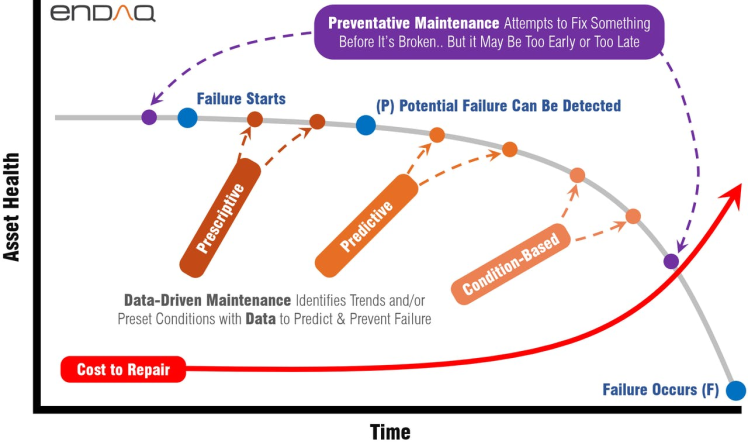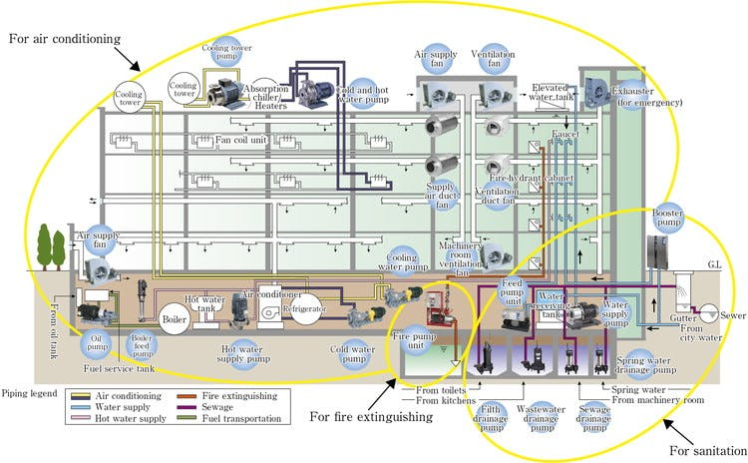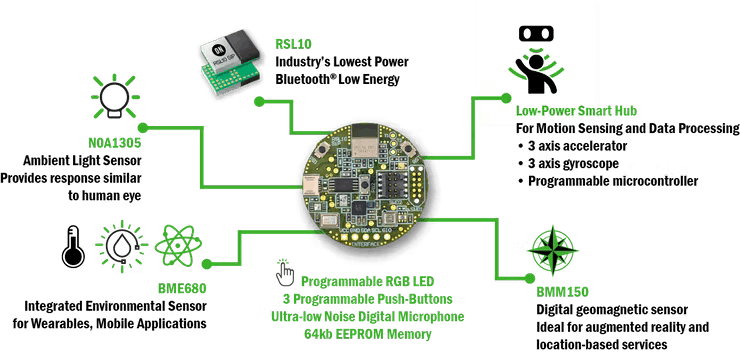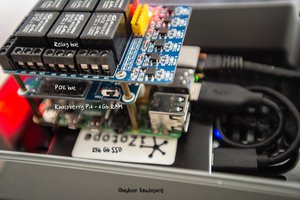Like any other machines, water pumps should undergo maintenance and repairs like lubricating, cleaning, changing air filters, and inspecting the machine for potential problems, so it’s important to address any potential concerns before they cause serious issues. Instead of taking reactive measures when the damage has already happened, people can use ML-based predictive maintenance that will help avoid any severe issues and extend the life of a compressor pump.
With RSL10 sensors and Neuton AI, I’ve built a fast scalable solution for compressor water pump predictive maintenance. Let's watch a demo to see how the solution works:
👩🏭 Predictive Maintenance VS Reactive Maintenance?
Predictive maintenance is a type of troubleshooting that addresses needs before they turn into problems. This process helps you prevent equipment breakdowns rather than waiting until a concern reveals itselfReactive maintenance requires far less forethought but can cost a lot. Predictive maintenance requires more planning, but it can pay off in big ways, as we’ll see. Of course, it’s not possible to predict every problem, but you can avoid a lot of unexpected machinery issues.
Image source: https://blog.endaq.com/differences-between-condition-based-predictive-and-prescriptive-maintenance

Image source: https://blog.endaq.com/differences-between-condition-based-predictive-and-prescriptive-maintenance
Reactive maintenance requires far less forethought but can cost a lot. Predictive maintenance requires more planning, but it can pay off in big ways, as we’ll see. Of course, it’s not possible to predict every problem, but you can avoid a lot of unexpected machinery issues.
🌊 Importance of water pumps
Water pumps have several areas of use: residential, industrial, and commercial, depending on their features. But, the functions of all these pumps remain the same – they all transport water and other liquids from one place to another.
Source: https://www.ebara.co.jp/en/jihou/no/list/detail/256-2.html

Source: https://www.ebara.co.jp/en/jihou/no/list/detail/256-2.html
In this project, I used RSL10, the industry’s lowest power Bluetooth® 5 SoC, and several sensors from ON Semiconductor and Bosch.

Key Features
- Arm® Cortex®−M3 Processor Clocked at up to 48 MHz
- Supply Voltage Range: 1.1 − 3.3 V
- 384 kB of Flash Memory
- 76 kB of Program Memory
- 88 kB of Data Memory
- ~10 yrs battery operation on deep sleep mode
Advanced Wireless features:
- Bluetooth 5.2 Certified with LE 2−Mbit PHY (High Speed), as well as Backwards Compatibility and Support for Earlier
- Supports FOTA (Firmware Over−The−Air) Updates
- Rx Sensitivity (Bluetooth Low Energy Mode, 1 Mbps): −93 dB
- Transmitting Power: −17 to +6 dBm
- Range up to 100 Meters
🔥 Sensor Fusion
Sensor fusion is the process of combining sensor data or data derived from disparate sources so that the resulting information can be more accurate. Sensor fusion creates a situation in which the whole is much greater than the sum of its parts. These mechanisms provide a way to resolve contradictory situations and allow the development of dynamic sensing strategies. Sensor fusion is also known as (multi-sensor) data fusion and is a subset of information fusion
The concept of data fusion has origins in the evolved capacity of humans and animals to incorporate information from multiple senses to improve their ability to survive. For example, a combination of sight, touch, smell, and taste may indicate whether a substance is edible.
Sensor fusion and ML and connectivity enable context awareness, and context awareness enables a new world of services.
What is "Context?"
Context is defined as the circumstances or facts that form the setting for an event, statement, situation, or idea. In software programming, the idea of developing context-aware applications has been around for a while. Context-aware apps examine...
Read more » Sumit
Sumit
 Vinh Tran
Vinh Tran
 Rahul Khanna
Rahul Khanna
 Reinier van der Lee
Reinier van der Lee
 6toecat
6toecat